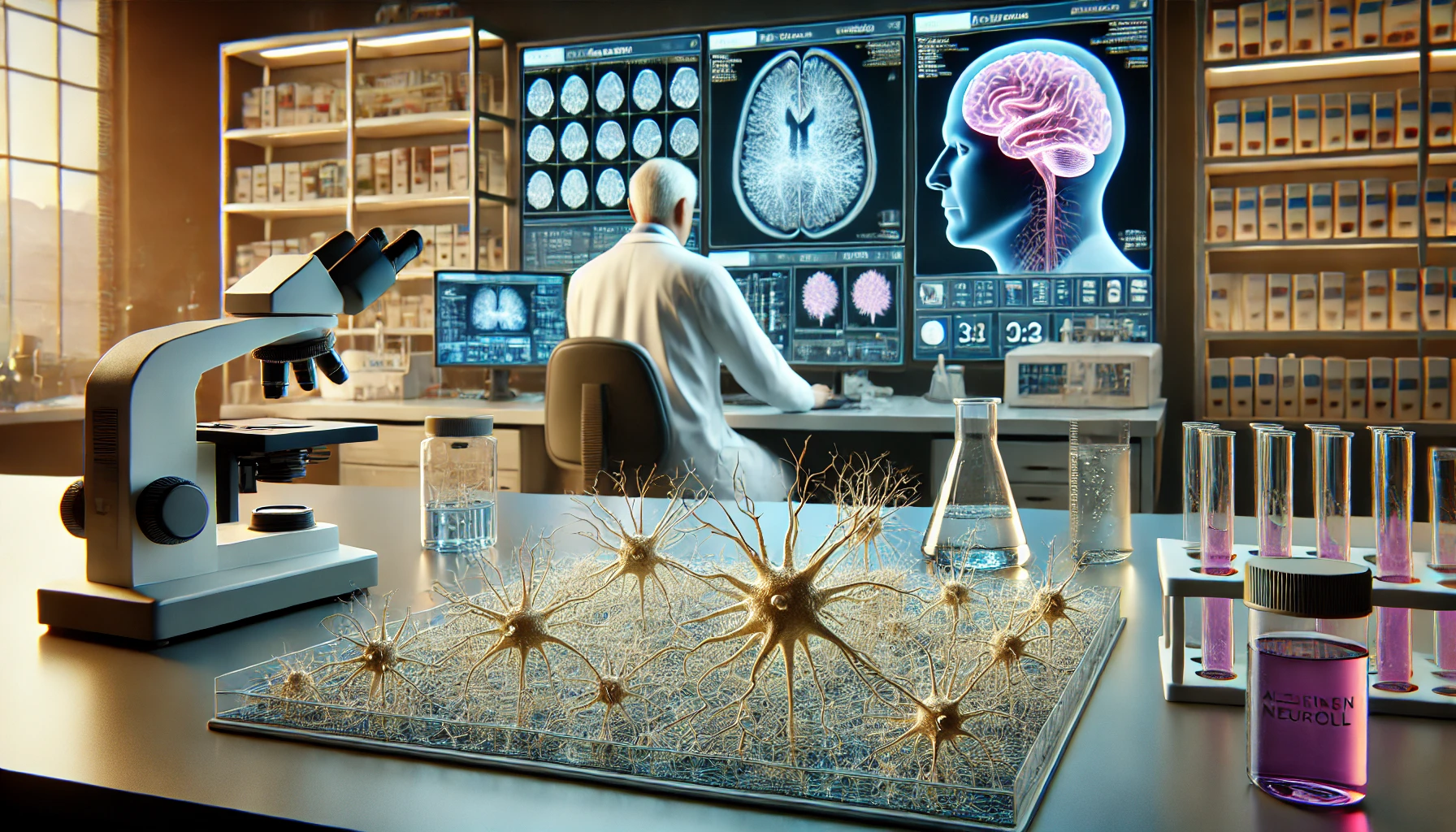Health News
aging brain cells, alzheimer's disease, alzheimer's research, alzheimer's treatment, amyloid beta, amyloid beta plaques, brain cell aging, early detection alzheimer's, genetic elements alzheimer's, late-onset alzheimer's, neuron reprogramming, neuronal spheroids, personalized alzheimer's treatment, retrotransposable elements, tau protein deposits
Unlocking the Secrets of Aging Brain Cells: Breakthrough Alzheimer’s Research Sheds Light on New Treatment Strategies
Alzheimer’s disease, particularly the late-onset form, has long been a mystery, with the aging process playing a key role in its development. Now, researchers at Washington University have made a major breakthrough, developing a novel method to study the disease using patient-derived neurons. This new approach not only mimics the characteristics of Alzheimer’s in the lab but also offers exciting possibilities for new treatments based on genetic elements and early intervention strategies.
In this comprehensive post, we will explore the groundbreaking findings from this research and how it could revolutionize our understanding of Alzheimer’s disease. We will also discuss the role of aging in the disease’s progression, the implications of genetic elements, and why early detection and treatment could be the key to stopping Alzheimer’s in its tracks.
A Revolutionary Method: Studying Alzheimer’s Disease Using Skin Cells
Traditionally, studying Alzheimer’s disease has been a challenge due to the difficulty of directly examining the brain cells of living patients. However, scientists at Washington University School of Medicine have developed a novel method that bypasses the need for brain biopsies. This technique involves converting skin cells from patients into neurons, the very brain cells affected by Alzheimer’s.
Using this method, researchers can simulate late-onset Alzheimer’s in the lab, allowing them to closely observe the disease’s characteristics, including the buildup of amyloid beta plaques, tau protein deposits, and neuron death. These lab-grown neurons accurately reflect the aging process and the disease’s progression, offering unprecedented insight into Alzheimer’s disease.
The Role of Aging in Alzheimer’s Development
Aging is a significant risk factor for late-onset Alzheimer’s disease, which develops gradually over many years and typically shows symptoms only after age 65. The Washington University researchers focused specifically on this type of Alzheimer’s, using patient-derived neurons to model how aging contributes to the disease.
Through their experiments, they found that aging affects how cells manage certain aspects of their genome. Specifically, they identified changes in retrotransposable elements, which are small pieces of DNA that can move around in the genome. These changes may contribute to the development of Alzheimer’s by altering the way neurons function as we age.
This finding opens up exciting new avenues for Alzheimer’s research, as targeting these genetic elements could lead to treatments that slow or even prevent the disease’s progression.
Modeling Alzheimer’s in the Lab: A 3D Approach
One of the most fascinating aspects of this research is the way scientists were able to grow neurons in a 3D environment, mimicking the brain’s structure. These neuron clusters, known as spheroids, allowed researchers to observe how Alzheimer’s affects brain cells in a setting that closely resembles the real brain.
When they compared the spheroids from Alzheimer’s patients to those from healthy individuals, the differences were striking. Neurons from Alzheimer’s patients quickly developed amyloid beta plaques and tau tangles, both of which are hallmark features of the disease. In contrast, neurons from healthy older adults showed only minor amyloid deposits, suggesting that while aging contributes to plaque formation, Alzheimer’s significantly worsens the problem.
This ability to model Alzheimer’s in the lab is a major breakthrough, as it allows researchers to test new treatments and interventions in a controlled environment.
Early Intervention: The Key to Treating Alzheimer’s?
One of the most important findings from this study is the potential for early intervention in Alzheimer’s disease. The researchers discovered that treating neuronal spheroids with drugs that target amyloid beta plaques early in the disease process significantly reduced plaque formation. However, once plaques had already begun to form, the treatments were far less effective.
This suggests that early detection and treatment are crucial for slowing or preventing the progression of Alzheimer’s disease. By identifying the disease in its earliest stages — before significant damage has occurred — doctors may be able to use treatments that halt its development.
The Role of Genetic Elements in Alzheimer’s
Another critical discovery from this research is the role of retrotransposable elements in the development of Alzheimer’s. These genetic elements, which can jump around within the genome, were found to become more active as the brain ages. Inhibiting their activity with drugs like lamivudine, an antiviral medication, showed promise in reducing amyloid beta plaques and tau tangles in lab-grown neurons from Alzheimer’s patients.
Interestingly, this treatment only worked in patients with late-onset Alzheimer’s. It had no effect on neurons from patients with early-onset, inherited forms of the disease, further suggesting that late-onset Alzheimer’s has unique molecular features tied to the aging process.
This discovery could lead to personalized treatments for Alzheimer’s, with drugs specifically targeting the genetic elements involved in late-onset forms of the disease.
The Future of Alzheimer’s Treatment: What This Means for Patients
The findings from this study represent a significant step forward in Alzheimer’s research, but what do they mean for patients? As scientists continue to develop this new method of studying late-onset Alzheimer’s, they are opening up new possibilities for treatment and prevention.
By focusing on the role of aging and genetic elements in the disease’s development, researchers may be able to create treatments that slow or even prevent Alzheimer’s from progressing. This could have a profound impact on the millions of people affected by the disease, offering hope for improved quality of life and longer periods of cognitive function.
Challenges and Limitations
While this research is promising, it’s important to note that there are still challenges to overcome. For one, the study was conducted in a laboratory setting, and it’s not yet clear how these findings will translate to real-world treatments. Additionally, the study focused on late-onset Alzheimer’s, which means that patients with early-onset forms of the disease may not benefit from the same interventions.
Moreover, while targeting retrotransposable elements shows promise, more research is needed to fully understand their role in Alzheimer’s development and how best to inhibit their activity without causing unintended side effects.
Conclusion: A Promising Path Forward
The research conducted by Washington University represents a groundbreaking step in our understanding of Alzheimer’s disease and the role of aging in its development. By using patient-derived neurons to study the disease, scientists have unlocked new insights into how genetic elements and aging contribute to Alzheimer’s, offering new hope for early detection and treatment strategies.
As this research progresses, it could lead to personalized treatments that target the specific genetic factors involved in late-onset Alzheimer’s, potentially transforming the way we approach Alzheimer’s care in the future.



